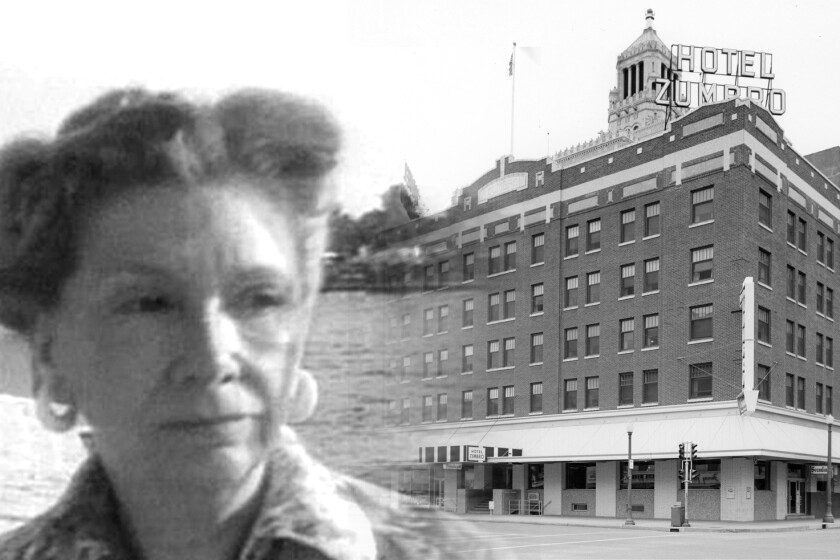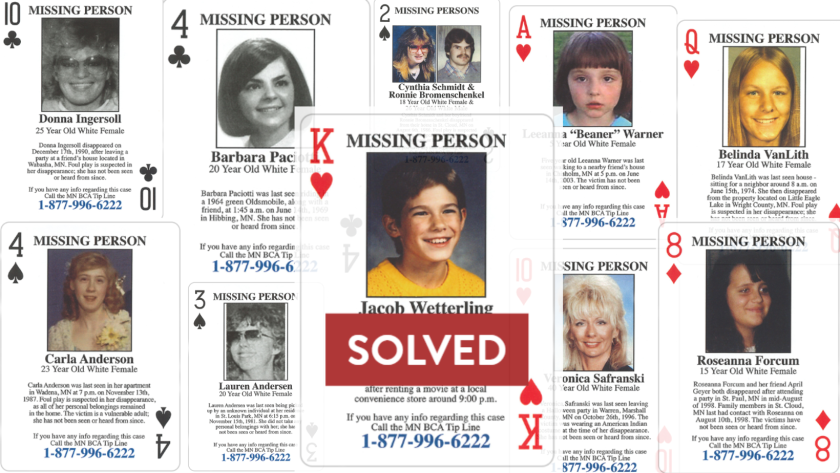ROCHESTER — The clerk at the Rochester gift shop recalled how the woman appeared to be in a hurry.
“It was as if someone was waiting for her or she had somewhere to go,” said Phyllis Redalen, a clerk at the Buckskin Gift Shoppe in the subway level of the Zumbro Hotel, where the Rochester Marriott Mayo Clinic Area stands today.
ADVERTISEMENT
Redalen was the last known person to see suburban Chicago multimillionaire and candy lady Helen Voorhees Brach alive, as reported in the April 24, 1977, Post-Bulletin.
The PB story featured a photo of Redalen, who remembered Brach because she was one of the first customers in the store right after she opened, holding two items like those Brach bought that day: a $27.50 jewelry box and a $12.50 soap dish.
Brach was never seen again. It became one of the most baffling and unusual crime mysteries of modern times. Forty-six years after her disappearance, the question still haunts: What happened to Helen Brach?
In the years following her disappearance, investigators were better at describing how stumped they were than solving the case. They described it as another Jimmy Hoffa case. Hoffa had disappeared only two years before.
Adding to the perplexity is that people like Brach — one of the richest women in the U.S. — weren’t the kind to suddenly disappear without a trace. As heiress to a Chicago candy company fortune, Brach’s wealth was estimated at between $30 million and $50 million.
Veteran Chicago journalist James Ylisela, in his 2015 book “Who Killed the Candy Lady?” offered the most compelling explanation as to what happened to horse-loving Helen Brach, seemingly solving the cold case 37 years after her disappearance.
An animal lover, Brach, 65, was involved in the horse trade and had come across an insurance fraud scheme run by mobsters, Ylisela claimed. Valuable horses, many of them show jumpers, were killed for the insurance payout. Ylisela surmises the plotters, fearing she was going to go to the authorities, had her killed.
ADVERTISEMENT

Brach, according to the book and documents, was kidnapped, beaten and shot, her body disposed of in an Indiana steel furnace. The theory is the order was given by a notorious Chicagoland horse dealer.
The theory casts doubt on the role of the only man to be punished in connection with Brach’s disappearance and murder. Brach’s boyfriend, Richard Bailey, was a charming conman who preyed on lonely, financially secure women.
In 1995, he was sent to federal prison for 30 years, having pleaded guilty to a federal racketeering charge for his role in a conspiracy to swindle elderly women out of their money.
But in an unusual twist at the sentencing hearing, the judge agreed to hear arguments from prosecutors of his involvement in the murder of Brach. And the judge agreed, handing down a 30-year sentence, 20 for his alleged involvement in Brach’s murder.
Last year, after serving his time, Bailey died at 93, taking whatever secrets he had about the case to his grave. To the end, he protested his innocence.
Ylisela, the author, told the Guardian that his fascination with the story was fueled by his belief that Richard Bailey had nothing to do with Brach’s murder.
“Richard Bailey is an interesting character, a born conman,” Ylisela wrote in his book. “He’s not a good guy but one thing I do not think he is, is a murderer.”
ADVERTISEMENT
Instead, Ylisela believes that Brach stumbled into the dark world of the mob-connected “horse mafia” that operated for decades in the Chicagoland area. It was orchestrated for much of that time by Silas Jayne, the head of a family of horse dealers. A violent man who was implicated in a series of murders, Jayne was convicted of conspiracy to murder his own brother. He died in the mid-1980s.
A figure key to shedding light on the case was an individual named Joseph Plemmons, who came forward with claims he knew how Brach was killed and her body disposed of.
Plemmons pointed the finger at Jayne, claiming the dark-hearted horse dealer ordered Brach’s murder from his prison cell. Plemmons claimed he was part of the gang that kidnapped and killed Brach.
Plemmons also implicated Brach’s longtime houseman Jack Matlick as being a member of a “pretty nasty” crew that carried out the plot.
Matlick, long a figure of suspicion in Brach’s disappearance, told Glenview police stories that never seemed to add up. The day on which Brach made her purchases at the Rochester gift shop, Matlick claimed to have picked her up that afternoon at O’Hare Airport after she flew in from Rochester.
He said he drove her home, then drove her back to O’Hare four days later to catch a flight to Florida. He said he never saw or heard from her again.
Investigators struggled to corroborate his story. Matlick said he was at home in the mansion throughout all of the four days before Brach’s supposed departure for Florida. Yet, investigators could not find anyone who saw her during that time. Brach also used the phone extensively, yet police could not find anyone who talked to her in person or by phone.
ADVERTISEMENT
Also adding to the perplexing nature of his actions: On the Sunday night before Matlick said he took Brach to O’Hare, he called a cleaning and decorating service to request that a crew come for inside cleaning and painting “as soon as possible.” And on the Monday morning after he said he used one of Brach’s Cadillacs to drop her off at O’Hare, Matlick had the Cadillac shampooed inside and out and visited her safe deposit box.
Suspicion continued to center around Matlick after it was discovered that 11 forged checks cleared Brach’s account after she disappeared. They were dated Feb. 17 and 18, just after she purportedly returned from Rochester. Seven of the checks, totaling more than $15,000, accrued to Matlick’s benefit, according to an April 19, 1977, Chicago News Day article.
Handwriting specialists deemed the checks forgeries. But while experts said the checks weren’t signed by Brach, they agreed they didn’t seem to be signed by Matlick either.
Reading through old, yellowing PB articles, what stands out is how stumped investigators were in trying to solve the case. Three years after her disappearance, her attorney, John Menk, described the case “as old as yesterday’s pancakes.”
The case never stayed dormant for long. Over the decades, the case would never wander far from the public eye due to a torrent of documentaries, books and newspaper articles about it.
Brach is described as a striking, statuesque girl from Ohio who sought escape from the narrow Appalachian world in which she was born. Her beginnings were plain. She was born to a “long line of postal employees,” according to biographer Pat Colander, author of “Thin Air.”
She was divorced when she left for Florida and worked as a hat-check girl. That’s where she met and married the head of the world’s largest candy manufacturing company, Frank Brach.
ADVERTISEMENT
The Brachs were a reclusive couple, seldom socializing.
“She would wave when she went by in one of (five) pink cars,” one neighbor recalled. An employee once said she would rather eat carryout chicken than go out and dine at a fancy restaurant.
When Frank Brach died in 1970, Helen became more eccentric. Her passion was animals. She fed filet mignon to her various dogs. She once chartered a plane from the Bahamas to be at a dying dog’s bedside.
Brach wasn’t declared dead until seven years after her disappearance. During that time, Brach’s house, grounds, horses and financial affairs were maintained as if she were only on vacation.
“If Helen Brach comes home today, she can sit down and catch up on back issues of 'Classic,’ her favorite horse magazine,” a 1984 USA Today article reported.

































